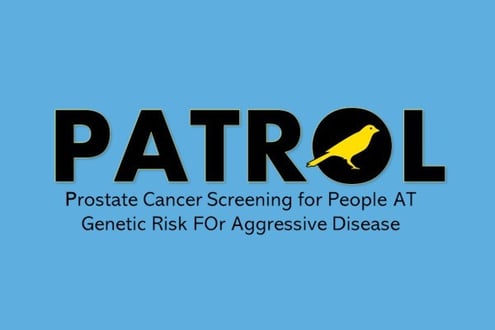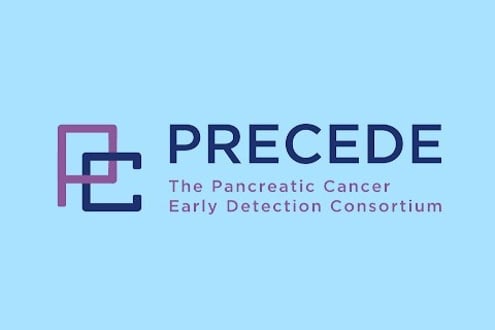ATM: Options for Managing Cancer Risk
Risk Management for People with Inherited Mutations
People with mutations have options for managing their increased cancer risk. Experts at the National Comprehensive Cancer Network (NCCN) created guidelines for people with an mutation to manage their cancer risk. We recommend that you speak with a genetics expert who can look at your personal and family history of cancer and can help you decide on a plan for managing your risk.
NCCN recommends that all people with an inherited mutation receive education on the signs and symptoms of ATM-related cancers. NCCN guidelines for specific cancers are listed below.
People with an mutation may also qualify for clinical trials looking for more effective screening, prevention or interception of cancer.
Beginning Age |
Recommendation |
Additional Information |
25 |
Learn to be aware of changes in your breasts. |
Based on NCCN guidelines for women of average risk. |
25 |
Breast exam by doctor every 1-3 years. |
Based on NCCN guidelines for women of average risk. |
30-35 |
Discuss the benefits, risks and costs of yearly breast MRI with and without contrast with your doctor. |
|
40 (or earlier based on family history of breast cancer) |
Yearly mammogram. |
|
No set age |
More research is needed to show whether people with inherited ATM mutations benefit from risk-reducing mastectomy. Discuss with your doctor about the option of risk-reducing mastectomy based on your personal and family history of cancer. |
Risk-reducing mastectomy lowers breast cancer risk by 90%, but has not been shown to improve survival. Even after double mastectomy, some breast tissue, and therefore cancer risk remains. |
No set age |
Discuss the benefits, risks and costs of medications to lower the risk for breast cancer with your doctor. |
Tamoxifen or other estrogen-blocking drugs may lower breast cancer risk. Medications or vaccines are being studied in clinical trials. |
Source: NCCN Guidelines: Genetic/Familial High-Risk Assessment: Breast, Ovarian, Pancreatic, Prostate, vs. 3 2025. |
||
Types of pancreatic cancer screening tests
There are two types of tests that are used to screen for pancreatic cancer in high-risk people.
- MRCP (Contrast-enhanced magnetic resonance cholangiopancreatography) is a special type of imaging that looks closely at the pancreas, liver, gallbladder, bile duct and pancreatic duct to find abnormalities such as cancer.
- EUS (Endoscopic ) involves passing a tiny scope with an attached probe down the esophagus to the stomach. This allows doctors to look closely at the pancreas.
Researchers are testing new approaches to pancreatic cancer screening and prevention through clinical trials.
Pancreatic cancer guidelines
Beginning Age |
Family History |
Recommendation |
50 (or earlier based on the youngest case of pancreatic cancer in the family) |
For ATM mutation carriers regardless of family history. Note: this is a change from 2024 guidelines. |
|
Source: NCCN Guidelines: Genetic/Familial High-Risk Assessment: Breast, Ovarian, Pancreatic, v. 3 2025. |
||
Beginning Age |
Recommendation |
Additional Information |
No set age |
Become aware of ovarian and primary peritoneal cancer symptoms. Report to any symptoms that persist for several weeks and are a change from normal to your doctor. Routine ovarian cancer screening using transvaginal ultrasound and a CA-125 blood test has not shown benefit and is not recommended. |
Symptoms of ovarian cancer include:
|
No set age |
More research is needed to show whether people with inherited ATM mutations benefit from risk-reducing surgery to remove their ovaries and fallopian tubes. Currently, experts recommend that you have a discussion with your doctor about the option of risk-reducing surgery based on your family history of cancer. |
|
Before age 50 |
Researchers are studying whether the removal of the fallopian tubes only (salpingectomy), while delaying oophorectomy until closer to the age of natural menopause is a safe option for lowering risk in people who are not ready to remove their ovaries. If you are interested in this approach, talk with your doctor about the benefits and risks, and consider enrolling in a research study. |
|
No set age |
Oral contraceptives (birth control pills) have been shown to lower the risk for ovarian cancer in people with BRCA1 mutations. Have a discussion with your doctor about the benefits and risks of oral contraceptives for lowering ovarian cancer risk. |
Research on the affect of oral contraceptives on breast cancer risk has been mixed. |
Source: NCCN Guidelines: Genetic/Familial High-Risk Assessment: Breast, Ovarian, Pancreatic, Prostate, vs. 3 2025. |
||
Beginning Age |
Recommendation |
40 |
|
Source: NCCN Guidelines: Prostate Cancer Early Detection; v. 1, 2025. |
|
Other cancers
There has not been enough research to show a benefit from screening and prevention for other cancers in people who have an mutation. For this reason, experts recommend managing these risks based on your family history. Cancer screening and prevention research studies may be available.
More Resources
Participate in Prevention Research
The screening and prevention studies below are enrolling people with mutations. To search for more studies, visit our Search and Enroll Tool.

PATROL Study: Prostate Cancer Screening for People AT Genetic Risk FOr Aggressive Disease
Clinicaltrials.gov identifier: NCT04472338

Screening Study for Men at High Genetic Risk for Prostate Cancer
Clinicaltrials.gov identifier: NCT03805919

Pancreatic Cancer Early Detection for People at High Risk
Clinicaltrials.gov identifier: NCT04970056

Screening in Men at High Risk of Developing Prostate Cancer
Clinicaltrials.gov identifier: NCT05608694

Prostate Cancer Genetic Risk Evaluation and Screening Study (PROGRESS)
Clinicaltrials.gov identifier: NCT05129605

Helping Latinas Understand Their Risk for Breast Cancer and Get Breast Cancer Care
Clinicaltrials.gov identifier: NCT05483283
Stories from the Community
June 11, 2021
Watch Our Expert Webinars on Mutations
What's new for people with ATM, CHEK2 or PALB2 mutations?
Cancer Risks, Screening and Prevention for People with ATM, CHEK2, PALB2 and Other Genes



